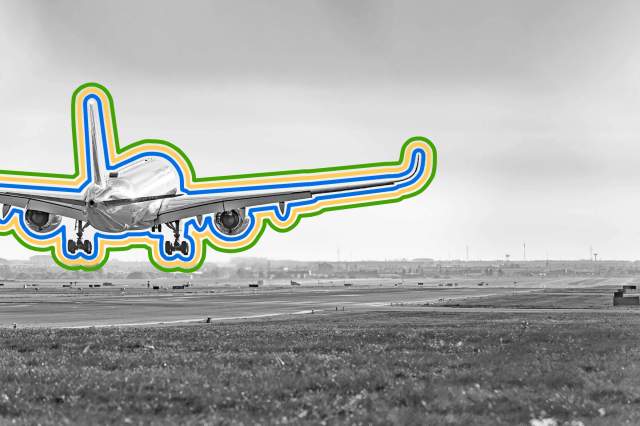
Flying on Planes Affects Your Sense of Taste
Humans aren’t designed to cruise comfortably at around 40,000 feet, and some strange biological phenomena can occur when airplanes take our bodies out of their terrestrial-based environment. Studies have discovered that our ability to sense sweet and salty foods diminishes by significant percentages when we fly in an airplane. That’s because at high altitudes, air inside an airplane cabin hovers at around 12% humidity — drier than most deserts on Earth. Since taste is also closely entwined with our sense of smell, the extremely dry air messes with our odor receptors and makes food taste more bland.
Surprisingly, even the constant drone of airplane engines can cause some foods to taste less intense, according to a separate study on the “effects of background noise on food reception.” Long story short, an airplane does not release the inner gourmand in humans, so maybe it’s best to stick to those small packets of (highly salted) peanuts.

Planes Are Struck by Lightning One or Two Times a Year
Lightning seems like one of the obvious hazards of pointing a plane nose-first into a storm cloud — and the fear is at least somewhat warranted. In an average year, a plane experiences one or two lightning strikes (though geographic location is an important factor). However, commercial aircraft are designed to handle this unexpected electrical load, so passengers experience little more than the bright flash of the lightning itself. Many airplanes are made of aluminum, which is an excellent conductor and will direct the current of a lightning strike through the skin and toward the tail. Airplanes designed with composite materials include conductive fibers that pull off the same trick. Other grounding and shielding technologies also help protect sensitive wiring and instruments on board the aircraft. If a lightning strike occurs, the aircraft is thoroughly inspected on the ground. This can cause significant delays, but there hasn’t been a lightning-related accident on a commercial aircraft for decades.

Planes Can Fly With Just One Engine
Your average airliner can take a significant amount of punishment and keep on flying. For example, commercial airliners are designed so that if one entire engine malfunctions for whatever reason, whether a bird strike or just a technological snafu, the plane can continue flying using its other engine. This isn’t just a safety feature agreed upon by the world’s airline manufacturers; it’s the law. Although a plane likely wouldn’t have the thrust necessary to take off on one engine, it can fly and land without problem.
More Interesting Reads

Contrails Come From Water Vapor
Glance at the sky on a clear day and you’ll likely spot a contrail. This ice cloud forms as water vapor dispersed by an aircraft’s engine, and in the surrounding air, condenses around tiny exhaust particles from the engine. Contrails were discovered during the first high-altitude flights in the 1920s, and became a particular nuisance in World War II, when contrails effectively gave away a bomber’s strategic location.
Contrails are categorized into three groups, and each group is essentially defined by how long the contrail lasts in the air. Contrails have been the subject of an erroneous yet persistent conspiracy theory around “chemtrails,” which involves the belief that these clouds are actually some sort of biological agent deployed over the Earth for some undefined, nefarious purpose. Fortunately, water vapor is generally pretty benign.

Black Boxes Are Not Black
When an aircraft crashes for any reason, investigators and ground crews will hunt for what’s called a “black box.” The term refers to an airplane’s dual flight recorders, which together contain crucial data regarding transmissions, the pilot’s voices, aircraft sounds, and other important information. However, a “black box” isn’t black (and sometimes isn’t even shaped like a box). Instead, “black boxes” are usually bright orange so they’re easy to find after a crash.
So where does this misnomer come from? No one knows for sure, but one guess dates back to 1939, when aviation engineer François Hussenot developed the means to record flight information onto photographic film. Because this film was sensitive to light, this box needed to be pitch black inside — hence the name.

Flying at 33,000 Feet, Planes Are About 10% of the Way to Space
Traveling around 8 miles above sea level, planes easily traverse even the most impressively high natural features on Earth. At its lowest cruising altitude, around 33,000 feet, an airliner still clears Mount Everest by a comfortable 4,000-foot margin.
Space begins at the Kármán line — the boundary where Earth’s atmosphere ends — at about 62 miles up, so an aircraft has a long way to go (not that it’d have any hope of getting there). The highest-altitude flight of any aircraft, not including rocket-equipped spacecraft, belongs to a Soviet MiG E-266M that flew up to 123,523 feet above sea level in 1977. While 24 miles up is an impressive feat, it’s not even halfway toward the outer reaches of space.












